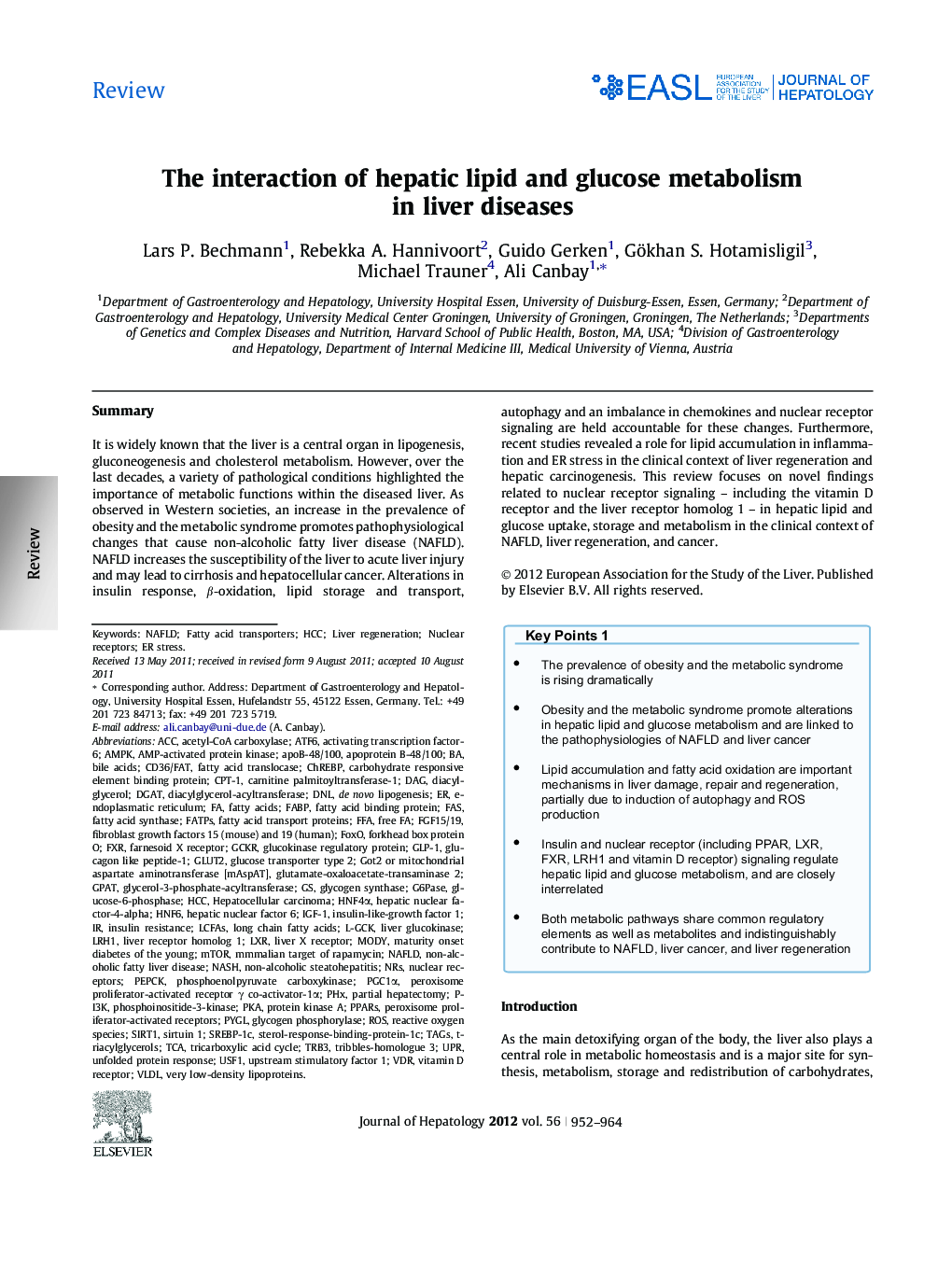| Article ID | Journal | Published Year | Pages | File Type |
|---|---|---|---|---|
| 6107625 | Journal of Hepatology | 2012 | 13 Pages |
SummaryIt is widely known that the liver is a central organ in lipogenesis, gluconeogenesis and cholesterol metabolism. However, over the last decades, a variety of pathological conditions highlighted the importance of metabolic functions within the diseased liver. As observed in Western societies, an increase in the prevalence of obesity and the metabolic syndrome promotes pathophysiological changes that cause non-alcoholic fatty liver disease (NAFLD). NAFLD increases the susceptibility of the liver to acute liver injury and may lead to cirrhosis and hepatocellular cancer. Alterations in insulin response, β-oxidation, lipid storage and transport, autophagy and an imbalance in chemokines and nuclear receptor signaling are held accountable for these changes. Furthermore, recent studies revealed a role for lipid accumulation in inflammation and ER stress in the clinical context of liver regeneration and hepatic carcinogenesis. This review focuses on novel findings related to nuclear receptor signaling - including the vitamin D receptor and the liver receptor homolog 1 - in hepatic lipid and glucose uptake, storage and metabolism in the clinical context of NAFLD, liver regeneration, and cancer.Download high-res image (409KB)Download full-size image
